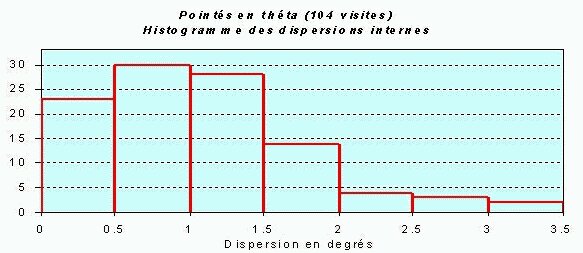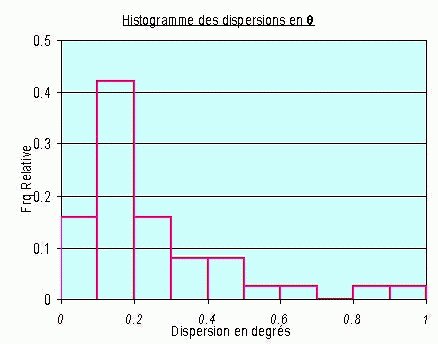APPROACH OF THE PRECISION
a) Scattering of samplingThe sampling is the corner stone of the geometric reduction. Its scattering from one night to an other influences directly on the quality of the final measure. The following table summarizes 17 nights of the first semester 2002 with two optical configuration.
|
Sampling Clavé+VP |
Sampling Meade+VP |
| 0.38185 | 0.43503 |
| 0.38191 | 0.43503 |
| 0.38207 | 0.43575 |
| 0.38211 | 0.43608 |
| 0.38220 | 0.43485 |
| 0.38256 | 0.43466 |
| 0.38265 | - |
| 0.38283 | - |
| 0.38289 | - |
| 0.38294 | - |
| 0.38298 | - |
| 0”38245 +/-0”0004 | 0”43523 +/-0”00055 |
| F=3020 mm | F=2654 mm |
b) internal scattering
I use this indicator provided by my software to estimate the global quality of a set of images and to reject it if necessary.


c) Scattering of the observations
A more classic approach consists to estimate the dispersion of each night in relation to the final measurement. The source of the histograms is a set of 41 couples visited at least on two occasions and on which a complete measure has been done.
|
90% of the measures are less scattered than 0°5. 3 tight and undersampled couples are distinctly aside (1°5, 1°9 and 3°6). They don't appear on the graph for reasons of readability but enter in the calculation of the histogram surfaces as well as in the computation of the mean dispersion that is equal to 0°4. The median value is of 0°2. |
 |
| 70% of the measures are less scattered than 0"04. |  |